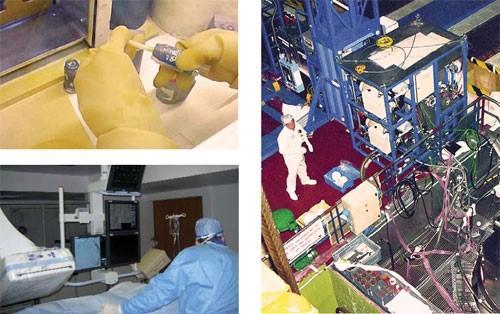INWORKS epidemiological study: new results on the risk of leukemia, lymphoma and multiple myeloma among nuclear industry workers
New results from the INWORKS epidemiological study published on August 31, 2024 confirm the existence of a relationship between leukemia risk and cumulative exposure to low doses of ionizing radiation.

Workers subject to dosimetric monitoring (ou) Dosimetrically monitored workers
INWORKS is an international epidemiological study of mortality among nuclear industry workers. It is a large-scale epidemiological study designed to quantify the health risks potentially associated with repeated exposure to low doses of ionizing radiation. Its aim is to verify the validity of the assumptions underlying the current radiation protection system, which is based in particular on an extrapolation of knowledge of radiation-induced risks drawn from the epidemiological follow-up of survivors of the Hiroshima and Nagasaki bombings. IRSN has been an active contributor to the INWORKS study since its inception.
INWORKS brings together cohorts of French, American, and British workers employed in the nuclear industry (fuel preparation, research, power generation, spent fuel reprocessing) and monitored for external exposure to ionizing radiation by personal dosimeters. The study population includes over 300,000 male and female workers employed from the mid-1940s onwards. The French cohort, led by IRSN, includes over 59,000 workers from CEA, EDF, and Orano.
New research results recently published on the website of the journal “The Lancet Haematology” show that the risk of death from leukemia (excluding chronic lymphocytic leukemia, considered to be non-radiation-induced) increases in proportion to the dose accumulated by the workers over the course of their working careers. They also confirm that risks are low at low doses.
These results reinforce our knowledge of the effect of protracted exposure to low doses of ionizing radiation, and therefore constitute an important addition to the consolidation of the assumptions underlying the radiation protection system. In particular, they support the justification for radiological protection of populations exposed to low doses of ionizing radiation (nuclear industry workers, medical staff, diagnostic medical exposure, etc.).
Read the IRSN information note on the new INWORKS results (PDF)
Read the publication in The Lancet Haematology
Previous information notes
- October 3, 2023: Publication of new results from the INWORKS epidemiological study on cancer risk in nuclear industry workers (PDF)
- October 21, 2015: Publication of new results from the INWORKS epidemiological study on cancer risk in nuclear industry workers chronically exposed to low doses of ionizing radiation (PDF)
- June 23, 2015: Publication of the first results of the INWORKS epidemiological study on the risk of leukemia and lymphoma in nuclear industry workers chronically exposed to low doses of ionizing radiation (PDF)
